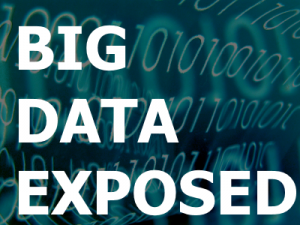Check out the new video from our parent organisation. (Sorry for the bitable banners)
Tag Archives: concepts
How much rope is enough?
Reflecting back over my career and various positions in organisations, I can say that managers in various guises have played a major part in how well I performed and how well I progressed into a better person in the workplace and in the processes I adopted and now use. Transferable skills shall we say.
We all over time gather info and learn, it’s just built into our systems. That’s why you hear people say, “You learn something new every day.”, when they come across a fact they did not know.
So, in the workplace we are always learning, now I don’t mean gaining certifications here, even though that always helps. I mean we are constantly shaping and evaluating what we are doing and if it could be done better and changing it so that the next time we do that task or a similar one, we will do it differently. Experiential learning if you like.
Where does the rope come in?
Well the rope comes in as I reflect back on various line managers at the various posts I have had. Some managers obviously stand out for the way they behaved. Some for positive reasons and some for negative reasons. But the importance is they stand out.
A manager’s job is a complex one and staff see the manager in different ways: –
- The manager is in between me and the top brass, so they take the heat.
- The manager is there to bounce things off and I let them take the final decision that I run with.
- The manager is there to help me do what I do and advise and give experience where needed
- The manager is there to identify my strengths and weaknesses and help me grow.
- The manager is there to hound me and be on my back all the time
- The manager is there to micromanage everything I do
- The manager is there to bully me into doing things a certain way
- The manager is just an extension of the top brass and I don’t trust them
- The manager is just looking after themselves all the time.
The above are just some responses I have heard and I am sure you have heard many more over the years. The top ones are positive and the bottom ones are more negative. The culture the manager creates is one of the most important things in an organisation. It is either a culture of trust and growth and innovation or one of distrust and tolerance of the management as a whole.
The rope comes in where the mangers are switched onto their staff and not just processes and statistics. You see the managers that have stuck out in my past are the ones that saw my potential for self-motivation and gave me the rope to run with it. When I stretched the rope and I did on more than one occasion, they would grab the end and pull me back in a bit, but always with encouragement and not demotivation..
I have worked in some great environments where the people were such a massive resource and if they had been managed correctly would have been so innovative that the potential clients would be climbing over each other to come and deal with us. Sadly, a culture of short ropes and bullying was relevant and it destroyed the people and the innovative juices within a short period. Very sad indeed to be part of and watch. I did escape and got out before the whole house of cards fell.
So how much rope is enough?
This is a great question, don’t get me wrong I believe in systems and know they have to be there for so many reasons. I EVEN TEACH THEM.
But, I also have such a heart for innovation and letting people be creative. I teach a creative thinking techniques seminar that gets people to tap into the juices that made them creative when they were children. Which they have now parked as they have picked up the managerial styles over the years.
They come out and can create ideas that are normally outside their thinking processes. It’s like a relearning. I do believe that most people can be self-motivated and if given a brief and some rope may well shock you with the solutions they come up with. Once you trust and give them the opportunity they will impress. If not we all learn anyway and nothing is lost; I guarantee that more will be gained. It’s is easier to get the best out of staff with motivation than bullying. That I also guarantee, having experienced both.
What are your thoughts on this whole area, would be good to hear from you.
The Deep Web?

The Deep Web
In today’s ever changing world we are becoming more and more adept at creating names for things. Being into technology and the uses of it, I always think I am ahead of the game or at least trying to be and then a term pops up and I think, here we go again.
So when the term Deep Web came around I thought let’s actually look at how this is being used and what does it mean to the layman, now and in the future?
So how is it being used?
Well it is a term that talks about areas of the Internet that main stream, search engines just cannot reach. It is so buried that they don’t see it or how to get to it. Here is one definition I found for it.
“Deep Web (also called the Deepnet, Invisible Web, or Hidden Web) is the portion of World Wide Web content that is not indexed by standard search engines.” This is from Wikipedia and can be found here
This of course this has led to other definitions and I love the idea of standard search engines being like a fishing net cast across the sea and only catching fish in the top layers, then deep web is at the bottom layers and the net doesn’t go that far. Traditional search engines cannot see or retrieve content in the deep web. So they have named the section of the web that is indexed by standard search engines as the Surface Web, Yes another term to get your head around. You tend to wonder if Spiderman has all this trouble.
So is this the same as the Dark Internet?
The popular thinking is that the Deep Web should not be confused with the Dark Internet, which refers to network hosts and the Internet that no one can reach.
Why should we even be aware of the Deep Web?
Well most of the use of the deep net is perfectly OK and the usage need not be thought of anything other than perfectly innocent. However, government agencies and enforcement agencies are concerned that it could be a place where serious criminals can hide and carry out some unscrupulous activities. This of course will lead to, what seems to be the main way that things are handled today, passing laws that treat everything as the same and where this maybe catches some of the intended targets it also causes the innocent who were going about their normal business up to this point to have issues and have to change almost everything they do at present.
Remember most of the Deep web is Ok.
Of course there are loads of conspiracy theorists out there who claim all sorts about the use of the Deep Web, from one article I saw when researching saying that contract killers use it for activities, again this was from a tabloid known for it’s out there opinions that have sometimes little basis in fact. Down to webmasters keeping their websites away from standard search engines for security and other reasons.
To summarise
I think the problem, like many times in the past: is going to be unscrupulous people using an area of the Net that can be of benefit to organisations in a safe and useful way. This will cause paranoia and worry to users, governments and authorities. So legislation will come about and whether this causes all sorts of issues in using the Internet in the future we will have to wait and see. With everyone becoming more mobile and more and more dependent on the cloud and net technologies then these are going to be interesting times.
Your friendly neighbourhood Spiderman…….
BIG DATA EXPOSED
An SME owner’s (non-technical) perspective on the impact of Big Data.
People like to compare, categorise and count. From basic ‘one, two, many’ counting systems to hyper-complex variations on different types of infinities, we seem to be impelled to view patterns, detect trends and evaluate our daily experiences, individually and collectively, through numerical frameworks. At a mundane level, we value our work input in terms of money earned and measure business performance by accounting for profit or loss; more imaginatively, we give dimension to the universe by calculating light-years between galaxies to which none of us could ever travel, but which we like to count anyway!
Over the last 60 years, computers have enabled us to count (and record our totals) at an increasing pace and to a magnitude that would have appeared both incomprehensible and functionally senseless to many of those early IT pioneers. “Why would we ever need to count so much, so quickly?”, they might have asked. The current benefits of storing petabytes of data on the internet on a daily basis (Google processes lots of petabytes, by the way) were not so obvious in the 1950s, when the technological challenges were focused on making the great mainframes hulks more reliable and keeping them cool enough to work. But now, our IT capabilities have made the compilation of massive data-sets seem almost routine. Big Data, as a concept, is emerging as the latest evolutionary step in a line which includes its earlier diminutive cousins – relational databases and data-warehousing.
But doesn’t the ‘Big’ in Big Data signify that it is only of relevance to big organisations and groups which can access and analyse it? As a small B2B business owner, I don’t believe that to be the case, so here’s my take on what the existence of Big Data means for SMEs. I’ll start with two brief scene-setting questions – How have we created it and why do we think it’s worth having?
How have we been able to collect so many data-sets, public and private, in such a comparatively short period of time from the birth of the modern computer? The expansion of IT and the internet into daily living– and their adoption and understanding by the masses in the last two decades via PCs and smartphones – have allowed us to record our counts super-massively and with unimaginable speed. The sense of amazement I felt in the late 70s when hearing that a program would be able to carry out the calculations necessary for a college project OVERNIGHT appears embarrassingly naïve today. We’ve all heard the one about the computing power that guided the first men to land on the moon – that there’s more ‘oomph’ in a modern washing-machine chip now than in the whole of NASA in 1969 – stretches the comparison somewhat, but it makes the point that almost-microscopic processors are now orders of magnitude more powerful than their pioneering mainframe progenitors. And today, when we can link up computers in very large arrays to view the universe, analyse statistics on diseases via PCs connected across continents or announce our every waking thought on vast social media ‘soapboxes’, then our sense of conquest – that there is no piece of recordable data out there which we cannot collect and store – becomes limitless. Which leads me to ‘why’?
Why is having Big Data beneficial? That’s been part-answered in my introductory comments. We like to collect, compare and count things, and to me, in a sense, the numbers we can define and then amass on our storage systems have become those ‘things’. So, some of the answer as to why we deem it worthwhile creating evermore data is because “we can” (the mountain’s there, so climb it). Big Data’s existence, as a by-product of the internet-age, reaffirms to us that we can keep tallies of what matters to us. However, whereas, for the first 50 years of the technical development of IT, increasing memory and speeding up the circuitry to pipe the 1s and 0s to their storage point was the main focus (the digits were the means to the end), once the engineering reached a level of efficiency and reliability to guarantee operating stability, deciding what could now be done with the data thereby collected – the things as objects – became the scientific quest.
So, the question has moved on to become ‘what’s the point of Big Data – how can we extract information we believe to lie in the layer upon layer of digital substrates that form the internet’? Can Big Data, envisaged as a constantly growing entity it itself, a real-time flow of interactions across networks between people and organisations, now be mined by those with the sophisticated analytical skills and insight to ask the right questions, to yield motherlodes of information that could improve our understanding of human behaviour in a vast range of contexts? The answer, of course, is yes it can.
At a practical level, I’ve mentioned Big Data being analysed by astronomers and medical researchers to give but two small examples of how it is being exploited to test theories and hypotheses. There are, of course, other areas where Big Data is providing previously unavailable opportunities for other types of organisations and individuals to delve into data-sets to ask their own questions, be they commercial, not for profit or academic. For example, the main accountancy firms are in the process rapidly developing their capabilities to purchase and analyse Big Data as the value of their compliance services (making sure tax and other statutory returns are being made on time) diminishes and business-advisory (selling knowledge back to a business to help it grow or manage itself better) increasingly generates larger margins from their clients. My focus, however, now turns to what impact Big Data is having on SMEs by considering two cases based upon real contemporary events.
My first scenario originates from the world of banking, admittedly not the most popular of professions currently, but an essential commercial service for SMEs. The analyses emerging from the masses of Big Data on our transactions the banks own are revealing the fundamental changes in the way we use and interact with our money. Retail banks are closing branches and laying off staff in their thousands, not without complaint or customer reaction, but nevertheless with confidence that it’s the right thing to do. Why? Because they know, from near real-time Big Data analyses, that more customers are using internet banking and a decreasing number see any need to visit a branch (knowing your local bank manager is no longer a selling feature for your banking services – if it ever was for the majority of us). Having access to your accounts from your mobile phone has much more relevance, and therefore more value, for customers. This is not some banker’s hunch; the analytics prove it, right now! They see cash transactions dropping as cards and smartphone payment facilities are used to make 60% of purchases below £20 by some client demographics – and this is not being restricted to younger customers.
So what’s the impact on SMEs of this evidence from banking Big Data analyses? Well, at a basic practical level, it forcefully shows the more ‘cash-based’ trader that offering cashless payment facilities to customers will definitely bring in more business. However, for me there’s an additional learning point that has emerged from the banks’ current infrastructural changes – it demonstrates that Big Data can now be analysed in such a way as to provide reliable answers to increasingly specific and complex questions about commercial activity.
The banks and other organisations utilising Big Data are not ‘taking a punt’ when they decide to implement radical changes in their structure or operations. Rational decisions are being made, after analysing near real-time information, on product development, marketing campaigns and organisational structure because Big Data supports adaptive change to take place based upon what is required today. Likewise for ambitious SMEs, the opportunities are expanding to access meaningful information about their markets in their geographies that is near-real time, not months out-of-date or carelessly slung together from national marketing samples and sold at extortionate rates. Sure there will be a cost to obtain such intelligence, but there are more data-analysis organisations in the market which will provide more relevant and reliable external information than was available before. Big Data will allow SMEs to be more informed decision-makers, just as it has made large organisations more adaptive decision-makers.
My second scenario arises from a recent Big Data analysis conducted by an expanding financial management app company which provides services specifically for SMEs. Basic, easy-to-use (but perfectly functional and compliant) bookkeeping and accounting apps are now being marketed with the small business owner being viewed as the main purchaser, not their accountant. For most of the UK’s 4 million SMEs, getting over the unappealing bookkeeping hurdle could be made really simple (even enjoyable, for some) by adopting any one of the online financial management services such as Free Agent, QuickBooks and Sage Online. These make simple accounting very affordable and straightforward to do and allow the working relationship with one’s accountant to become more productive as the streamlined and rapid data-input process removes the drudgery of the paperwork, allowing a business to keep close to its most valuable asset – its information, i.e. those facts and figures that let it know how it is performing operationally and commercially. And here Big Data and small business inevitably and fortuitously collide.
Every online transaction is securely recorded in the Cloud by the SaaS providers – so they collectively have the records of their customers’ businesses writ very large. They know, from the transactional data that we pass to them, how we behave as organisations. For my example, Xero.com, a financial management app specialising in the SME market in the US, UK and the Antipodes, has used its anonymised data-sets to demonstrate that businesses which invoice promptly using online delivery methods can reduce their debtor days by 40%. Big Data on how SMEs manage their finances, once more in near real-time, has provided contemporary evidence not only that efficient invoicing gets you paid quicker (which we already knew) but also that using email to send out your bills and offering payment services to your customers can get you paid in 24 days rather than 40; this insight could be worth a fair bit to a cash-strapped business. So SMEs, utilising cloud-based financial, administrative and operational apps, can benefit from contributing their transactional records to a vast data-pool which can be analysed to give back information on comparative performance when measured against their peers.
The development of key performance indicators (KPIs) for SMEs will be an increasingly active market in the next few years. Competitive advantage will attained by those businesses which understand the value of devising and measuring KPIs which are specific to sector, geography, technology or markets and which have access to insightful analysts who understand the product or service being offered to customers. Analysis for its own sake has never been sufficient, but Big Data now makes more purposeful, commercially-focused analysis possible for even the smallest of businesses. Knowing why customers accept or reject what the market is offering can be gleaned from Big Data examinations of purchasing behaviour married to key-word reviews of social media comments. While the vast majority of SMEs are not able to do this for themselves, the opportunities to benefit from the existence of Big Data are beginning to open up through the growth in the tailored data-analytics market.
So, by moving into the era of Big Data, our ability to count has moved one stage further along the developmental path that started with ‘one, two, many’. We now, large and small businesses alike, must now count ‘one, two, how many?’ in order to profit from the advantages that Big Data offers us all to improve our analysis and decision-making.
What are your experiences and thoughts on Big Data and how we can use it?
Guest Blogger this month is
Rory H D Cooper
Managing Director
Canmore in Business
www.canmore.co
I don’t run or manage projects!
 This is a phrase I hear often; usually when talking to business owners, or even employees working for someone. They tell me they are not project managers, and wonder why I am telling them about Microsoft Project?
This is a phrase I hear often; usually when talking to business owners, or even employees working for someone. They tell me they are not project managers, and wonder why I am telling them about Microsoft Project?
Well, let’s look at the definition of a project. It is described as a series of tasks that have a beginning and end date, and a deliverable at the very end. It is constrained by resources and timescales. Now, is this sounding familiar?
If not, it should be – as it sums up any task you may be trying to achieve at any given point in time. Let’s assume most of us have a manageable workload (stay with me here!), so let’s liken it to juggling – normally we are juggling one or two balls at a time. We can teach ourselves that, and if we drop a ball, we can react quickly to pick it up again. However, scale this up (as many of us do), and now let’s say that you are juggling six or eight balls, but don’t have time to teach yourself advanced juggling. I would guess that you are now dropping balls more often, and sometimes even more than one at a time. Suddenly it’s not as easy to react to, and the consequences of any ball falling are much worse. There is a term for this situation: we call this firefighting, and when the art of project management changes into simply firefighting things as they happen, we’re in trouble. Is any of this sounding familiar?
So what should we do?
At a risk of sounding glib – the solution is to work smarter. Take the skills you already have, and build on them to enable you to act rather than react. Rather than fight those fires on a regular basis, let’s snuff out the ember as soon as we see it – and using project management software allows you to do this.
I have a client who is managing over 71 projects of various sizes, so that would be 71 balls to juggle – all with a different weight. They said they would never be able to do it without the use of software, and so they had trained themselves to juggle, and have actually been on two of our courses.
So who manages projects?
The answer is simple: we all do. Every one of us. From simply getting dressed in the morning, doing DIY or decorating, right down to our actual business in our workplace, we are managing multiple projects. But are we teaching ourselves to juggle?
Next Steps?
Check out our testimonials and read the section on project management, see what our clients have to say. Then, if you have questions or want to know more, get in touch.
How do you manage projects just now? Are you coping OK? What would happen if you had double this amount?
In our experience it’s usually best to put a system in place now, than try and introduce one after years of self-taught juggling!
We look forward to hearing from you.
Sniffing Around CES2014 in Vegas!
I have always wanted to put that as a title. However sadly we are not at CES 2014 in Vegas but we are sniffing around some of the reports that are appearing online to see what is being displayed and demoed this year.
The news if heavy with all sorts of reports from all our favourite electrical companies, Samsung stealing a lot of the press with their Ativ Book 9 2014 edition and of course their curved televisions 50-inch OLED.
LG have released their curved phones, which use OLED technology. They have also been showing off their Fireweb Firefox driven phone and not to be left out of course have launched and showed of their 4K curved OLED TV, 77-inch in size with a picture that is stunning.
Sony is producing facts and figures about sales of the new PS4 against the Xbox One and it looks like Sony is in the lead now and if the figures are to be believed, well in front.
Other news, is that Android devices are to top 1 billion in 2014, so not much slow down there.
One of the most interesting facts is that there are more wearable devices than ever before and a lot of talk about Intel moving in this direction. This is firing up rumours that Intel might be giving up on its mobile ambitions to pursue the wearable market. Time will tell.
Lenovo are still prominent this year with their Lenovo Thinkpad 8, they claim this newest offering, “will put a full PC in the palm of your hands.”
Other memorable news feeds are talking about the progress of self-driving vehicles, again this technology is developing fast and the computers are now able to handle more data than ever before, so watch out for the self-driving vehicle coming your way soon, no pun intended.
I will leave you with this link to a 3D food printer that has appeared at CES this year, it prints chocolate and candy….now there’s a printer for the office……
Yes, CES 2014 has once again not let any of us GEEKS down. There are developments from the hardware manufacturers like Tegra and snapdragon showing off where things are going next right down to new travel experiences and viewing delights.
Check out some of the feeds online and start to get excited about what is happening in the world of tech.
What would you like to see come sooner rather than later, let us know?
Ian Thomson
IT Turning Point
That gut Feeling?
I am always fascinated by the detective dramas on TV, as my wife would tell you, and the way they portray the detective trawling through the clues and the evidence to catch the culprit of the crime.
They also use a phrase quite often where they say, “I can’t prove anything, but I just have that gut feeling he did it.” We also hear about intuition, that feeling that you know it is right or going to happen but there is no evidence or scientific proof that it will.
I have been around this world now for around 51 years and over that time I have picked up info and facts as well as experiences that allow me to make decisions on various areas that I operate in. Generally called experience. Some people keep records and statistics to back up their experience so they can actually prove what they believe. I haven’t been as smart as that, but have I feel over the years gained a degree of Intuition if you like. That built in experience that allows for you to make a call on something before all the facts are in. Now granted sometimes you are wrong. But if I have learned one thing since I setup on my own in business, it is time sometimes is not on your side and you have to be able to turn on a sixpence to make decisions and fly by the seat of your pants.
The more I read about entrepreneurs that have been successful. The more I see that they had this type of approach, and they had the, “Gut feeling”, so to speak.
With 2014 approaching, are you evaluating what you have done in 2013 and looking at all the statistics and making a call just on them, or are you using all your senses and making a call using them as well.
Now, I am not advocating ignoring the obvious, but I am advocating that sometimes the obvious is not what lies around the corner for you and your business. Sometimes we just have to go with our gut feeling.
Have a great 2014 and step out of the statistical comfort box and do something based on just that gut feeling and see what happens.
Why the Nexus range, and do phone users even care?
I am, as you probably know by this time, into all things tech (with some exceptions) and have been over the last few years been into the smart phone market. Now, when I rummage around and find one of my old Nokia phones, I really wonder how I managed to survive with it. The smart phone market has revolutionised our opinion of what a phone should do, and in fact the phone element of any device seems the part least spoken about.
I have tried a number of smart phones over the years, and have drawn my own conclusions as to which ones are doing what I need then to do, while potentially taking the whole smart phone market further. I am always looking at what we have now, and what we could have in a very short period of time. Apple, as everyone now knows, got this whole snowball rolling and changed the perception of the mobile phone market. Then they launched the first successful tablet computer, not the first though, as Microsoft had tried the idea years earlier – but the market place was not ready for them back in the late 90’s, and they did not take off.
The Battle was on!
After the launch of the first iPhone, the battle for control of the smart phone market was now on. Apple had stolen the early lead with the touch screen phone and tablet market, wrestling market share from Nokia and it’s aging Symbian system. Other phone manufacturers could only try and catch up, some with more success than others.
Today, Nokia mobile are no more – the technology now owned by Microsoft who are using it to drive the Windows platform forward. Motorola Mobile are now owned by Google, a purchase that solidified the patent armoury most corporations have these days. Blackberry did not react fast enough, at time of writing they company is currently facing being sold off to various bidders (including names like Lenovo) in various packages.
The challengers
After their initial domination of the market, Apple began to face a challenge; Google acquired a company called Android, Inc (who unsurprisingly produced the Android operating system) and then got various manufacturers to buy into using Android for smart phone device and tablets – with these manufacturers they formed the Open Handset Alliance in order to further Android sortware and corresponding hardware. It had suddenly stopped being a one horse race, and Apple now had serious competition for their smart phones and tablets.
Through development of Android, Google has continued to push the boundaries of what can be done, and more and more manufacturers have joined the OHA. Apple has stuck to their tactics of premium prices and quality build, backed by a locked down operating system that is partially customisable. The story again, at time of writing, is that there are more Android devices switched on per day than Apple and all other phone operating systems combined.
In an attempt to aim for a premium phone experience, Google have created a range of devices branded Nexus. Hand chosen manufacturers have been asked to build these, and Google work closely with them on the software and hardware designs. The final products run a vanilla build of Android, and are pushed updates instantly as they are released.
This was partially in response to the problem Google encountered with other Android device manufacturers (such as HTC , Samsung etc.) would take the raw Android operating system, and then skin it with their own logos and interfaces in order to brand it as their device. While this allowed these manufacturers to make their phones unique from their competitors, it did mean the end user was at the mercy of the OEM for their Android updates, and many handsets are still several versions of Android behind, despite being less than a year old.
The Nexus Range
The latest incarnations of the Nexus range are the Nexus 5 phone (launched November 2013), and the Nexus 7 tablet (launched July 2013). There is also the Nexus 10 tablet (launched November 2012), but a new one is due to be launched imminently.
The benefits of a Nexus tablet or phone are the instant Android updates, and the fact that it all works with the hardware flawlessly. The devices all synchronise via the cloud, so data transfers seamlessly between them to allow mobile working at its best.
We test drove the Nexus 7 2012 version, and the Nexus 7 2013 version on this very blog – check them out and see what our thoughts and findings were.
So what do the public think?
Does any of this behind the scenes work affect what the public think about their next phone? I think for the majority it probably doesn’t, and it’s the next clever advert that may sell them their next phone. But for anyone who is, dare I say it, slightly geeky and interested in where their phone has come from – and, perhaps even more importantly, interested in where their phone might be going, this info might just sway their opinion.
What is your take on mobile development and where it might be going?
Thanks to Graham Thomson for his input into this article.
Flexible screens, a touch of the future?
The rumours and sneak previews of flexible screens by Samsung and other manufacturers has caught our eye and intrigued is. So here we are going to give you some gleaned info from the net.
But first let us ask you a question. What usage would you see flexible screens having and would they be better than what we have just now?
We picked our brains and thought of some of the following: –
Wrist devices.
Jackets or waist coats.
Wall mounted devices that follow the contours of the wall.
But what else?
Anyhow, onto what we have gleaned from the web.
We have viewed over the last 8 to 10 months the videos that have been going around demoing the flexible screen, or OLED manufacture. This new revolution has made manufacturers like Samsung go into overdrive with concept devices and then create videos demoing what they might look like. Here is one we have seen a few times and gets you thinking.
Samsung showed this at their CES talk this year. A brief potential view of where this technology maybe taking us. Again it will be down to the patent race and who gets the patents in first. Watch this space.
This next video shows the durability of the new screen technology, WARNING it does hurt to watch the screens we love today being pounded by a hammer…..
Ouch, that’s just not nice. But what about the OLED screen, durability at its core, flexible and will take abuse. There is definitely a market for that.
How about a touch window in your house. You get up in the morning and draw the curtains and the blinds are built into the window. Then you call up all sorts of touch screen info about weather and driving conditions etc. You are kidding me Ian surely I hear you cry….Well no.
Isn’t that amazing? Come on, it had you excited…..
So it looks like we will be able to wear the flexible units with Samsung already having launched their wrist device that is curved. We will also be able to drop then of a building by the look of it and then our houses will be equipped with the latest tech and info.
I just can’t wait!
Samsung are not the only manufacturer by the way, it is just they are at this time shouting the loudest about it with videos and promotions.
What are your thoughts on all this new Flexible screens and tech, does it excite you or bore you?
Ian Thomson
Consultant
IT Turning Point
Innovative Marketing
Just a quick one my friends, but we were so tickled by this that we thought it is definately worth sharing.
How to target the Advertising agents with a new track by a dance artist using new technology and having a retro look? That was the question here and we think they have done a great job. Absolutely fantistic idea and the use of technology and old Vinyl just blows you away.
Enjoy the video my friends and admire the innovation.
Might go and rake out my vinyl records now and dust them down…………….






